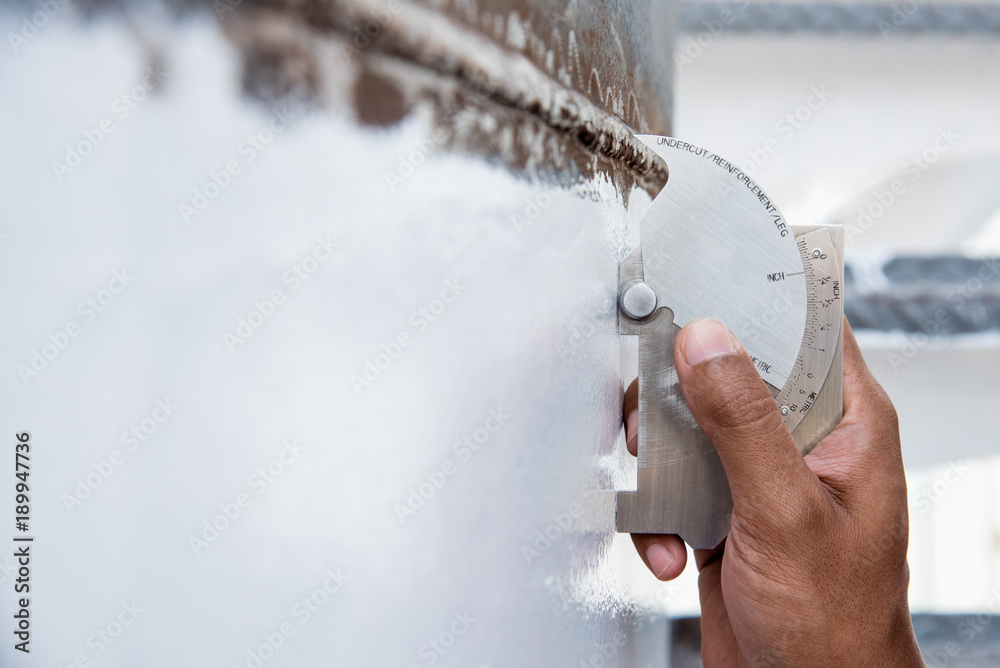Best Practices for Effective Tank Welding Inspection Processes
Wiki Article
Comprehensive Overview to Effective Container Welding Evaluation Techniques and Finest Practices for Quality Control
In the world of tank welding, strenuous assessment methods are extremely important for guarding structural integrity and ensuring compliance with sector laws. As we check out these essential elements, it becomes clear that an aggressive evaluation technique is not just valuable, but necessary for functional success in atmospheres dealing with hazardous products.Relevance of Container Welding Assessment

Container welding inspection works as a preventative procedure, identifying potential issues such as fractures, porosity, or inappropriate joint infiltration prior to they rise into significant problems. Routine inspections not only follow sector policies and criteria yet additionally enhance the longevity of the storage tanks, reducing the demand for costly repairs or replacements.

Visual Evaluation Methods
Using organized visual inspection techniques is vital for evaluating the quality and honesty of bonded joints in tanks. This method functions as the very first line of protection in identifying possible flaws such as splits, undercuts, and inadequate infiltration. The assessor needs to approach the task with an eager eye, making use of appropriate tools like multiplying glasses, flashlights, and mirrors to improve exposure.During the assessment process, the assessor ought to examine the weld profile, ensuring it follows defined criteria and standards (Tank Welding Inspection). This consists of examining the grain size, elevation, and combination with the base material. Assessors ought to additionally pay close attention to the surrounding areas for indications of thermal distortion or contamination that may influence the weld's efficiency
Documents of findings is essential; inspectors need to videotape any type of anomalies, categorizing them by seriousness for additional assessment. This systematic approach not just aids in immediate issue recognition however also adds to long-term quality control by making certain conformity with industry requirements. Regular training and calibration of aesthetic evaluation techniques better boost the integrity of analyses, eventually leading to more secure and much more sturdy container frameworks.
Non-Destructive Examining Approaches
Non-destructive testing (NDT) techniques are frequently employed in container welding examinations to analyze the integrity of bonded joints without compromising their architectural stability. These methods are important for recognizing flaws such as cracks, spaces, and additions that could lead to tragic failures if left undetected.Typical NDT approaches consist of ultrasonic testing (UT), which utilizes high-frequency audio waves to find inner flaws; radiographic testing (RT), employing X-rays or gamma rays to envision weld frameworks; and magnetic bit screening (MT), which exposes surface and near-surface discontinuities in ferromagnetic materials (Tank Welding Inspection). Liquid penetrant testing (PT) is also commonly used, qualified of detecting surface-breaking issues by applying a fluorescent or color contrast color
Each NDT method has its certain applications and advantages, making it essential for inspectors to select the appropriate technique based on the product and the sort of weld being evaluated. The combination of these NDT techniques right into the inspection process enhances the total top quality guarantee framework, making sure that bonded containers satisfy safety and performance standards. Ultimately, NDT plays an essential role in maintaining the stability great post to read and durability of tank structures in different commercial applications.

Paperwork and Coverage
Making sure comprehensive documentation and reporting during storage tank welding assessments is crucial for keeping conformity with industry requirements and assisting in efficient communication among stakeholders. Proper paperwork visit their website offers as a thorough document of assessment activities, findings, and any kind of corrective activities taken throughout the welding procedure. This information is important not only for quality guarantee yet likewise for audits and regulative reviews.
A well-structured assessment report need to consist of information such as the date of examination, names of examiners, welding procedures utilized, products made use of, and any type of discrepancies from developed requirements. Additionally, photos and diagrams can enhance the quality of the record, providing aesthetic context to the findings. It is also important to document any kind of non-conformities in addition to their resolution, ensuring that all stakeholders are educated of potential threats and the steps required to alleviate them.
Moreover, preserving a centralized data source for all evaluation records permits for easy access and evaluation, fostering a culture of openness and accountability. By focusing on precise documentation and coverage, organizations can not just copyright quality control but also reinforce their track record within the market, inevitably resulting in boosted safety and security and operational effectiveness.
Continuous Improvement Practices
Continual improvement practices are important for enhancing the high quality and effectiveness of tank welding inspections. One reliable method involves normal training and upskilling of examination personnel to remain abreast of the newest welding modern technologies and standards.
Additionally, using data-driven evaluation enables companies to track inspection results, determine patterns, and pinpoint locations for enhancement. Employing devices such as source evaluation can help in recognizing the underlying problems leading to issues, making it possible for targeted interventions. Furthermore, getting responses from examination teams and stakeholders creates a collective setting that motivates cutting-edge remedies.
Integrating innovative technologies, such as computerized examination systems and real-time tracking, can substantially boost the precision and speed of examinations. Normal audits of the evaluation processes likewise add to a society of accountability and continuous refinement. Inevitably, these continuous enhancement techniques not only raise the top quality of container welding inspections however additionally add to total operational excellence and client fulfillment.
Verdict
In conclusion, efficient storage tank welding inspection is critical for guaranteeing he has a good point the architectural honesty and safety of storage space systems, specifically those handling dangerous products. Employing a combination of visual assessment techniques and non-destructive testing methods helps with the very early recognition of defects, thus preserving conformity with sector criteria. In addition, robust paperwork and a commitment to continual improvement enhance quality assurance practices. Ultimately, these steps add considerably to operational excellence and the prevention of potential safety threats.Report this wiki page